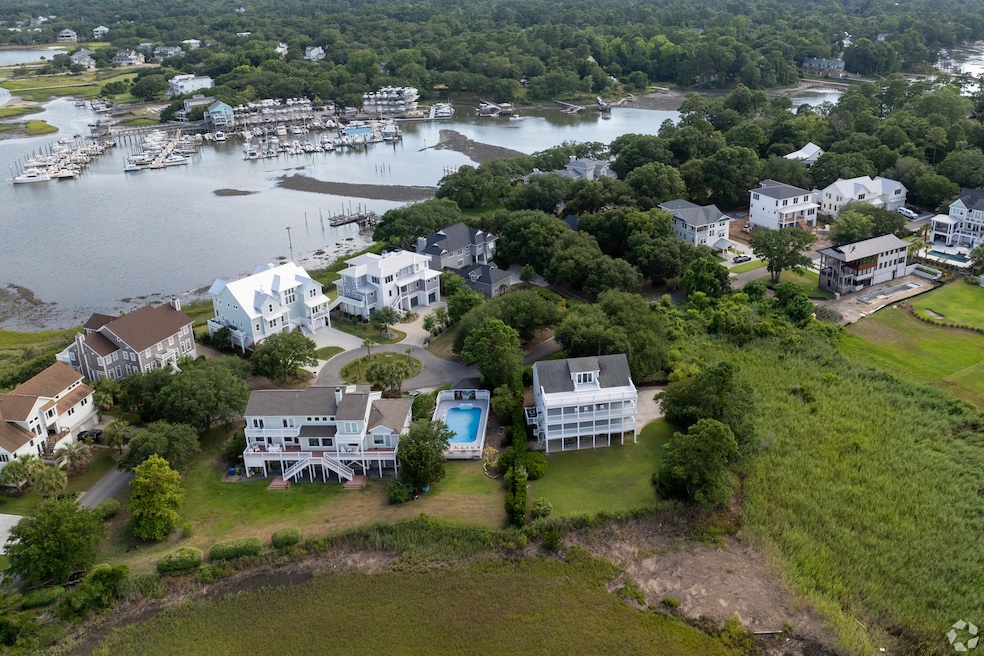The Carolinas and Tennessee have become hotspots for movers in the U.S., a trend driven by shifting priorities that's expected to last.
New data from moving and storage company Pods indicated that between January 2024 and March 2025, movers were most drawn to cities in the Southeast and Midwest. And they were most deterred from big metropolitan areas, especially on the West Coast and in the Northeast.
It's a sign of the times as markets continue to react to and reset from the initial shifts in migration during the COVID-19 pandemic.
"Between the pandemic shake-up, changing work policies, economic factors and natural disasters, the last half decade has given the moving industry a run for its money," Pods said in a statement. "Stalwart patterns continue to show an exodus from once-popular hive-like megacities — where skyrocketing costs of living and population densities are the norm — in favor of smaller, more breathable cities and towns with lower costs of living, easier access to the outdoors, and vibrant, self-contained cultural scenes."
The Carolinas are a ‘hot commodity’
For the third consecutive year, the Myrtle Beach, South Carolina-Wilmington, North Carolina, area topped the list of the best places to live, Pods’ data found.
“Living in this Southeastern coastal area checks off boxes like affordability, friendliness and access to nature,” the Pods team said in a statement, “though it’s not without risk during the Atlantic hurricane season.”

Wilmington real estate agent Tara English said demand in the area has especially been driven by out-of-state movers.
“From a desirability standpoint, yes, we’re still a hot commodity,” English said in an interview. “We do have a large buying population coming from out of state, especially post-COVID. Those numbers tripled, maybe even more.”
English, an agent with Berkshire Hathaway HomeServices Carolina Premier Properties and a restaurant owner, explained that most buyers have been drawn to the coastal community’s affordable lifestyle, especially those from the West Coast.
“If you look at other areas in the country in regards to quality of life and being able to live on the ocean and the river and have a historic downtown, we are incredibly affordable,” English said of Wilmington.
Homes.com data showed that in April, the median single-family home price in Wilmington was $474,900. In Myrtle Beach, that figure was $411, 995. Though both of those are higher than the national median of $385,000, they're significantly lower prices than in Los Angeles — the No. 1 city for move-outs — where the median home price was nearly $1.3 million in April.
“They look at what $2 million buys on the West Coast in comparison to what $2 million buys on the East Coast," English added. "It’s a huge difference. Taxes are lower. Utilities are lower. General cost of living is just lower. Even though our values have risen significantly, we are still ahead of the game in comparison to the West Coast.”
The Southeast offers jobs and a palatable cost of living
All told, the Carolinas claimed the most cities on Pods’ top 20 cities list, including Raleigh, Charlotte, Greensboro and Asheville. Tennessee also claimed several spots on the list, with Knoxville, Nashville, Chattanooga and Johnson City all ranking in the top 20.
It’s indicative of a larger shift in migration patterns as more people move to the Southeast, specifically the southern Appalachians. Those regions offer affordable living, access to nature, thriving job markets and lower taxes, according to Pods' analysts.
In Charlotte and Raleigh, for example, employment opportunities combined with more affordable housing has attracted young professionals, according to Homes.com analysts.
“The biggest driver for population growth in the Charlotte area has been job growth, particularly among the professional services and financial activities sectors,” Chuck McShane, senior director of market analytics at CoStar and Homes.com, said. “This has established the city as a post-college regional destination for young professionals. For the larger, millennial cohort now moving into their family-formation years, the area’s relative affordability makes homeownership more attainable.”

Raleigh is especially driven by its “education and health services sectors,” according to Nick Leverett, senior director of market analytics at CoStar and Homes.com.
“Raleigh remains a popular destination for a variety of reasons, including the city’s mild weather, reasonable cost of living, and healthy economy,” he said. Employers are attracted to Raleigh because of its highly educated workforce, and the abundance of employment opportunities, in turn, attracts more residents.”
And, unsurprisingly, Nashville tells a similar story. Major corporations, including Amazon, Nissan North America, Bridgestone Americas, Dollar General and iHeart Media have entered the city, creating jobs and drawing residents, according to Toby Jorgensen, senior director of market analytics at CoStar and Homes.com.

“Music City has benefited from several corporate relocations and expansions that are looking to benefit from the area’s rapid growth,” he said. “The metropolitan has a robust and growing labor pool of highly educated workers, and local players are banking on this to continue.”
The Florida exodus is more nuanced than it appears
Between 2021 and 2023, Florida dominated Pods’ move-in list. This year, though, only two Florida cities made the top 20 — and Miami and Tampa Bay were among the top 20 cities with the highest number of move-outs.
It’s a shift that reflects Florida’s transition away from a pandemic-era hotspot, but it’s not exactly black and white. While the data from Pods shows changes in domestic moves, it doesn’t account for international migration, a big portion of Florida movers, according to Juan Arias, senior director of market analytics at CoStar and Homes.com.
“With the exception of the pandemic period, most of the population gains in major cities across the country comes from net international migration, not domestic in-migration,” Arias said. “The spike in domestic movements post-pandemic was a rare event.”

Between 2023 and 2024, population growth in U.S. metropolitan areas was faster than in the previous year, and it outpaced growth on a national scale, according to data from the U.S. Census Bureau. That growth isn’t necessarily because residents are moving back to metropolitan areas, though. Instead, it’s been attributed to international migration, according to Kristie Wilder, a demographer in the bureau’s population division.
“Increasingly, population growth in metro areas is being shaped by international migration,” Wilder said in a statement. “While births continue to contribute to overall growth, rising net international migration is offsetting the ongoing net domestic outmigration we see in many of these areas.”
When it comes to domestic migration trends, Arias said the 2025 data is more of a reset to historical norms than it is an upending of a market.

“South Florida, for example, specifically Miami-Dade, has seen net domestic outmigration over the last decade or so as lower-income individuals get gradually pushed out by a rising cost of living,” he said. “These individuals tend to move to areas with a lower cost of living, like central/northern Florida markets, Georgia, the Carolinas, or Texas. That trend continues today.”
More than that, home prices and mortgage rates have remained elevated since the pandemic, making the rising cost of living even more difficult for homebuyers to keep up with.
That said, “most of the homes that are being transacted in South Florida right now are all cash sales in the $1 million-plus segment of the market, a much smaller slice of households,” according to Arias.

